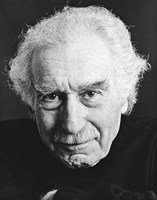Paul Robert SOLES
1930 2021

PAUL ROBERT SOLES Born in Toronto, August 11, 1930, to Arthur L. Soles and his wife Lillian (née Goodfellow) they of Polish/Lithuanian Jewish ancestry. Died in Toronto May 26, 2021.
Predeceased by his younger brother Bill and sister-in-law Marg, he leaves his baby sister Ruth-Ellen, nieces Liane and Alison, Heather and Sandra, nephews Richard, Allan and Brian, wife Jean (née Allan), son Jonathan and daughter-in-heart Jarah.
He will be remembered as a charming, magnanimous, principled man, a creative and versatile performer and a proud Canadian.
It was the titans of radio who first fired his imagination and he set out to emulate them from an early age. Committed to the highest standards throughout his 70 year career he remained the consummate professional wholly dedicated to his craft, but by nature he tended undeniably towards mirth. 'He who laughs, lasts' was an oft repeated aphorism.
He delighted in cracking people up on air and off and was a terrific joke-teller, an impressive mimic, accent man, public speaker, story-reader, announcer, host, emcee, compare. Warm and gentle with an easy going manner he enjoyed the company of others as much as his own. Thoughtful and inventive he possessed a quiet strength and a deep well of emotion.
A talented and hard-working person he often cited good fortune as the sole reason for his success, but the truth is he loved what he did and it showed. A champion debater and Army Cadet RSM at Vaughan Road Collegiate he dropped out of UWO after third year, following stints at CHLO and CKEY, to work full-time at CFPL radio, transitioning to TV at its inception in 1953.
Commissioned as a Pilot Officer in the RCAF Auxilliary at Station Crumlin he spent 1956-57 running the radio station at 3 Wing, Zweibrücken, Germany and travelled with the Flyers hockey team as their play-by-play man.
1962 he returned to Toronto, married a first generation Scottish-Canadian girl from southwestern Ontario, began a 16-year run on CBC's 'Take-30' and started a family.
er cherished turns during the CBC-TV years were the 1966 Goon Show-like summer replacement sketch comedy series Charlie Had One and This is The Law, 1971-1976. Best known today for portraying Hermey the Elf in Rudolph the Red-Nosed Reindeer (1964) and Peter Parker and his crime-fighting alter ego in the 1967 cartoon Spider-Man he worked extensively in every medium, his favourites being radio drama and live theatre.
His career took him all over the world but he happily spent the bulk of it in Canada, treading the boards of virtually every major theatre in the land.
He performed on and off Broadway and headlined theatrical tours across Canada and the US. Among his many memorable dramatic performances three stand out: the lead in the Canadian premiere in 1987 of 'I'm Not Rappaport'; the first Jewish Canadian to play Shylock in the 2001 production of 'The Merchant of Venice' at the Stratford Festival and the Dora-nominated role in the 2005 two-hander 'Trying'.
A multiple award nominee he won three: best supporting actor, Six Characters in Search of an Author, 1960 Dominion Drama Festival; best supporting actor in a dramatic series, Terminal City, 2001 Genies; best actor in a digital series, My 90-Year Old Roommate, 2017 Canadian Screen Awards.
Beyond work and family he had three life-long passions: sports cars, music and flying. A racing nut he drove the winning foreign entry in the American International Rally (1959) speaking only German and passing himself off as a factory driver from Mercedes in a zero-mileage model W120.
A bigtime jazz fan, particularly of the big-bands, he was a fixture at clubs on both sides of the border and he forged friendships with a number of performers.
An aviation enthusiast and pilot he owned two RCAF primary trainers, first a Fleet 16-B Finch open cockpit biplane acquired to barnstorm across the continent as part of The Great Belvedere Air Dash of 1973 and later a DeHavilland DHC-1 Chipmunk. He was a performing member of the Great War Flying Museum (Brampton), an air show participant for 20 years and a perennial volunteer for the Canadian International Air Show.
He did not go gentle retaining to the end his ability to uplift. When asked "how are you doing?" he replied "I make a living".
A celebration of life will be held at a date TBD.
In lieu of flowers please donate to an organization dedicated to theatre, comedy or jazz or to one that supports such artists.




















